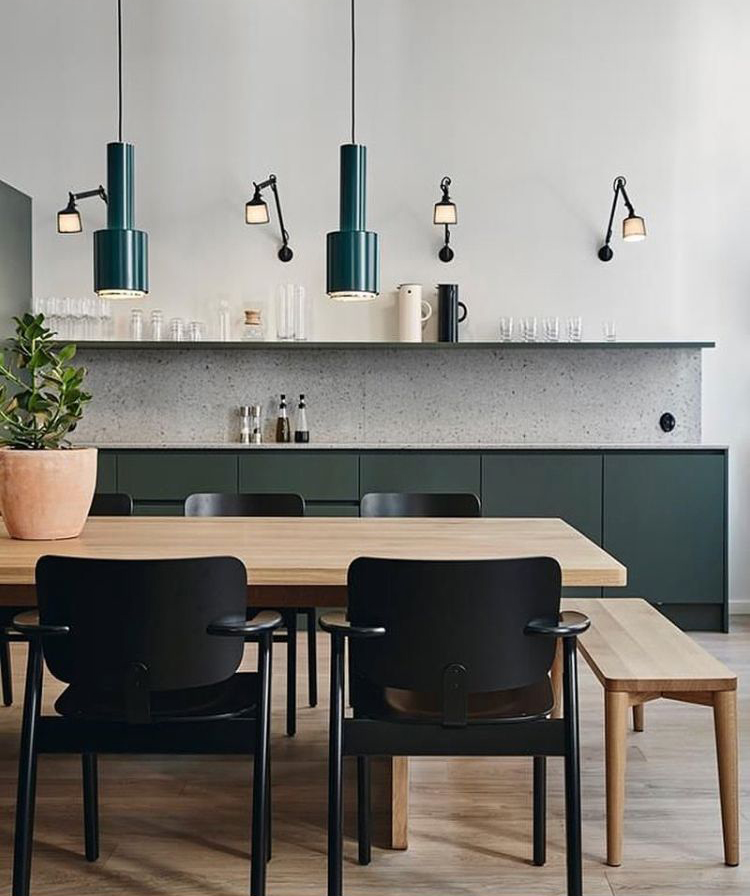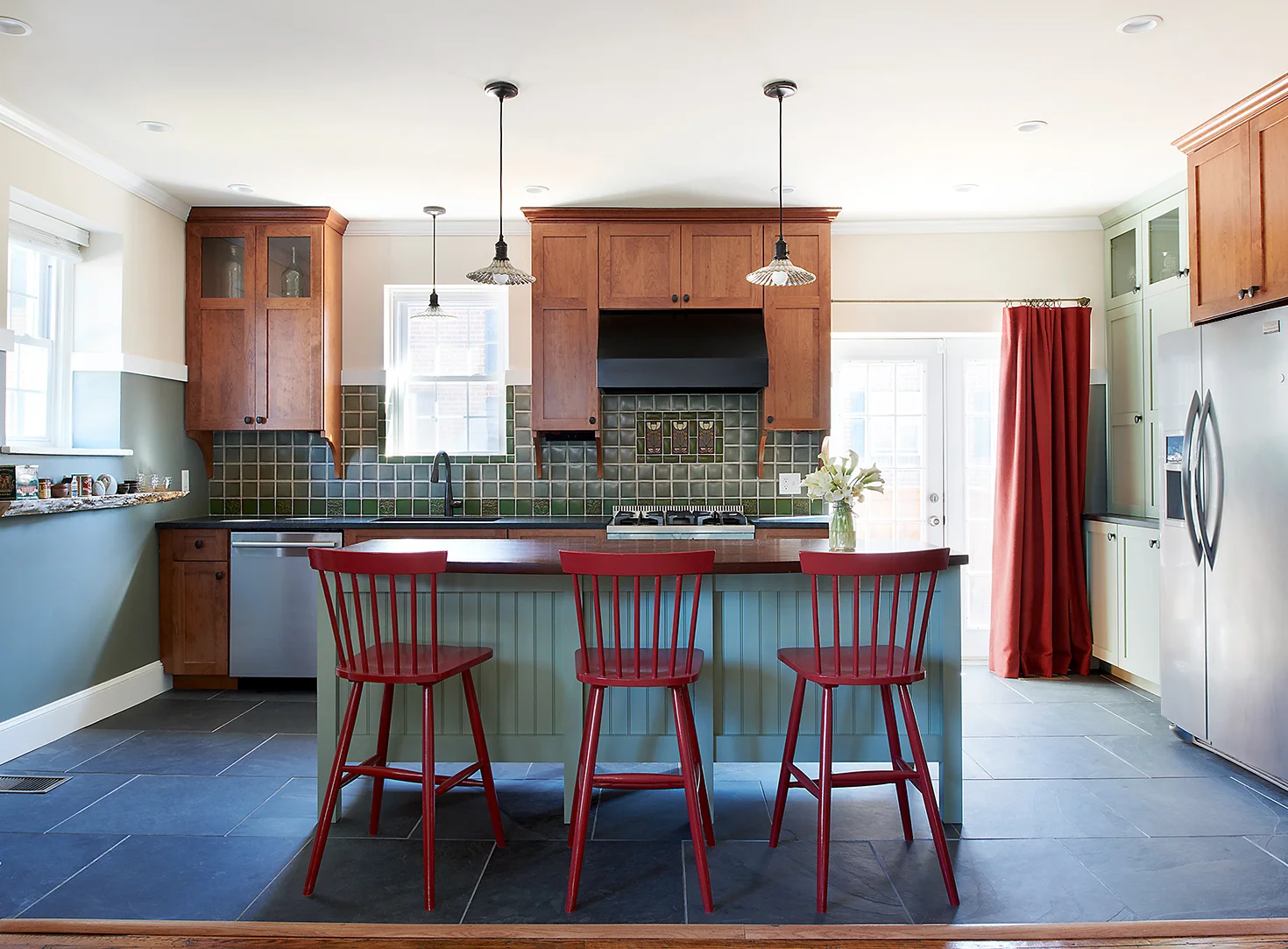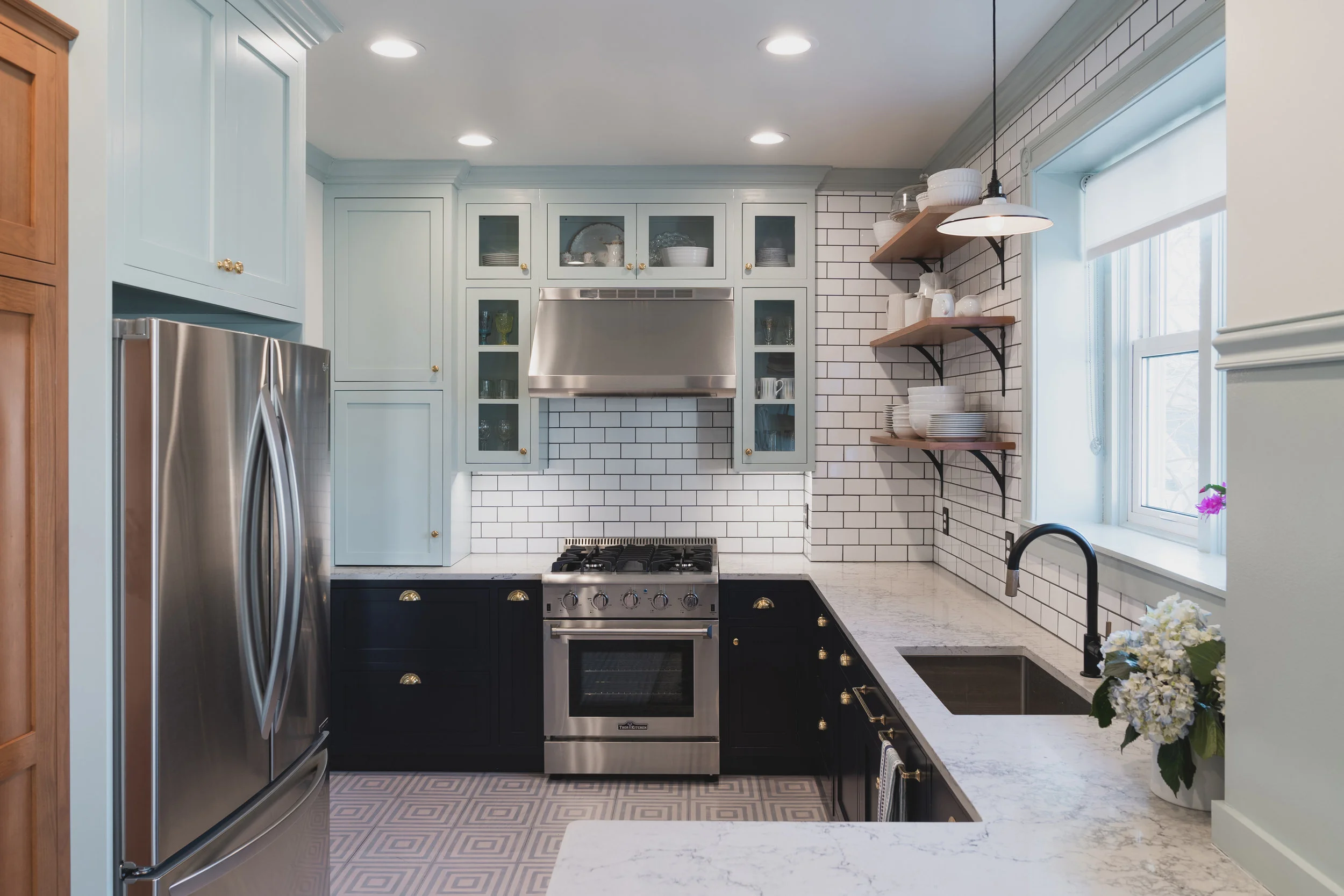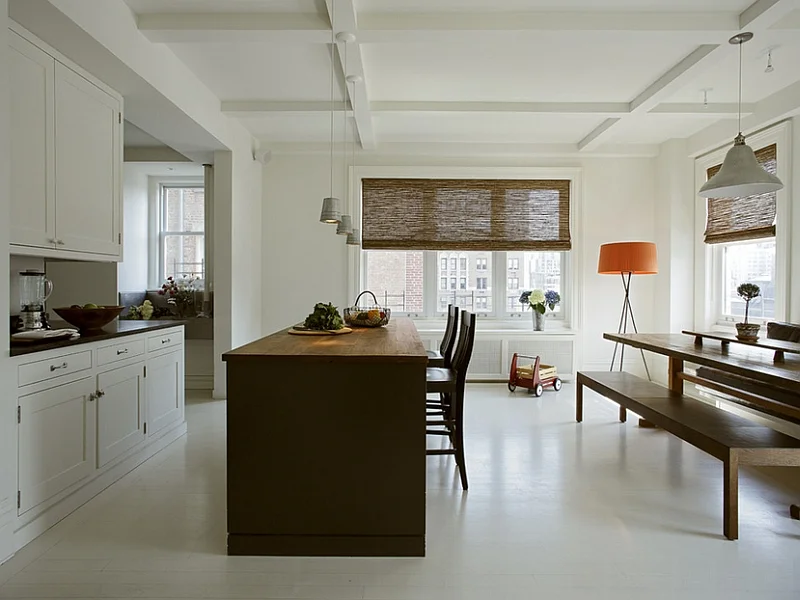Whether you’re having a glass of wine with friends or cleaning up at the end of the evening you will want different amounts of light in different parts of your kitchen. A mixture of lighting types make a kitchen feel and work the way you want it to. There are three basic categories of light in the kitchen: task lighting, ambient lighting, and accent lighting. Let's take a look at fixtures available for each type and where to place them.
1) Task lighting should fall where you work. Light over the sink helps you get that last spot off a glass. Light over a food preparation area can keep you from slicing a finger. Task lighting can take the form of a focused and aimed recessed ceiling light, but is more often a low-hanging fixture like a pendant light or an under-cabinet light. Recently, LED’s (Light Emitting Diodes) have overtaken halogen lights as the preferred bulb for this use. Pendant lights can be used over sinks and kitchen islands. Counters along walls are often lit by LED lights on the underside of shelves or wall cabinets.
Decorative pendants provide task lighting over the sink and island.
In-drawer and in-cabinet lights are gaining in popularity and may be thought of as a type of task lighting. Putting lights in every drawer and cabinet is probably overkill but they can be helpful in darker areas where you don’t want to turn on the overhead light every time, as in a pantry, or in a particularly deep drawer or cabinet.
2) Ambient lighting illuminates the overall space. When you’re cooking and cleaning you want to be able to light the whole kitchen at once. Recessed lights in the ceiling are the most popular source of ambient light in modern kitchens. Alternatives to the contemporary look of recessed lighting include flush mounted lighting, which goes on the ceiling surface, and track lighting.
Recessed led lights provide ambient light in this kitchen.
Because ambient light fixtures typically come with a bulb installed (or in the case of LED, no bulb at all) it is important to consider the color of lighting, which runs from blue/cooler to yellow/warmer. We recommend warm lights for most residential needs.
Sunlight is another form of ambient light, though it must be supplemented during evening hours. How much sunlight finds its way into your kitchen and at what times of day throughout the year may affect on where you plan to place things like a breakfast table.
A floor lamp is a fun accent light that adds interest and height to an empty corner.
3) Accent lighting adds drama or interest to a space. Typically, accent lights are an indirect light that highlights a particular feature of a room like a wall sconce that washes light against the wall. A modern twist would involve hiding LED strip lights to highlight structural features such as a beam or sloped ceiling. With the proper controller, modern LED’s can be adjusted to any color imaginable. Other types of accent lights include floor and wall lamps and lighting inside of display cabinets.
Finally, you will want to consider light switches and their placement. Should your lights be on a three-way switch that allows them to be controlled from two different places? Or do you want a single light on its own switch? Where will you be standing when you want to turn particular lights on and off? These decisions will have as large an effect on the usability of your kitchen as the position of the range. If done wrong, they will drive you crazy. For more on switches and outlets, see our post on where to place outlets in your kitchen.
Switches are placed conveniently near the door.
When choosing your kitchen lighting fixtures there is more to think about than their design. Where do they go and what do they do? Thinking about kitchen lighting can illuminate other aspects of your kitchen’s design that you may not have thought about yet. When in doubt, more light is better. You can always add dimmers.





